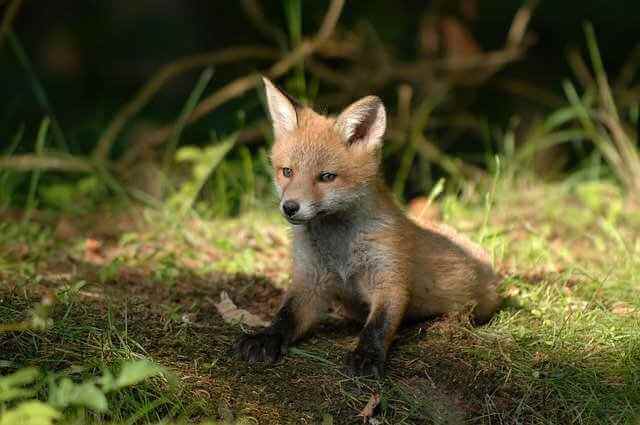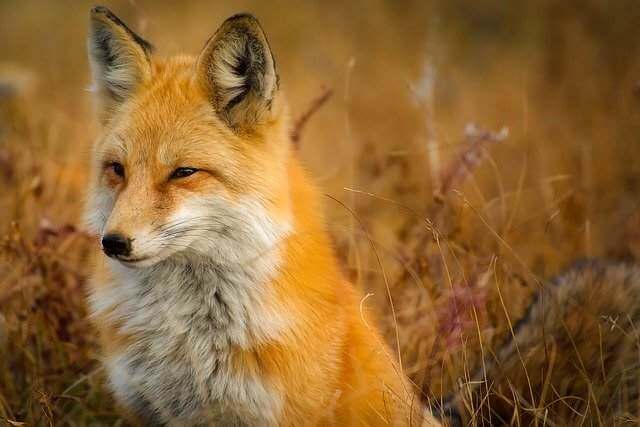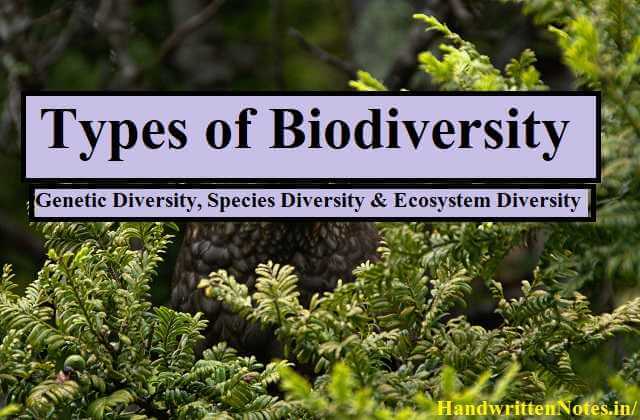Genetic Diversity, Species Diversity & Ecosystem Diversity are Types of Biodiversity. Biodiversity is of Mainly three types Which are above Mentioned. Ecosystem Biodiversity is further divided into three parts i) Alpha Biodiversity, ii) Beta Biodiversity iii) Gamma Biodiversity
Biodiversity is the variety and Variability among living organisms and the Ecological complexes on the Planet. If we observe the effect of the forest we find a wide variety of plants and animals. These plants and animals main range from a small shift to a large shaped.
Apart from animal and plants, there are so many microorganisms also which are not visible by the naked eyes. These microorganisms are present in water air and in soil.
The variety and variability of all plant animal and microorganisms collectively known as biodiversity.

Biodiversity is not similar in all places on the planet. It differs from place to place due to differentiation in habitats. habitats depend upon the environment. Habitats of a tropical region on the earth are different from habitats of a temperate region.
Each habitat has its distinctive biota. Scientists are engaged in the identification and naming of species for the last 250 years. At present the known and described a number of species of all organisms on the earth is between 1.7 million to 1.8 million.
It is assumed that only 15% of the species are known as compared to an actual number of species available on the earth. Approximately 61% of known species are only of insects.
- Plants– 270000 known species
- Mammals– 4650 known species
Types of Biodiversity
There are three interrelated hierarchical levels or types of biodiversity
A) Genetic Diversity

Genetic diversity is found on the genetic level of the same species. It is the diversity in the number and types of genes as well as chromosomes of different species and the variation in the genes and their alleles in the same species.
Examples
- The number of genes in mycoplasma = 450-700
- The number of genes in E. coli is = 4000
- The number of genes in drosophila melanogaster = 13000
- The number of genes in Oryza sativa = 32000-50000
- The number of genes in homo sapiens = 35000- 45000
Definition of genetic biodiversity
“Variation existing within a species is called Genetic diversity”
These genetic variations may be in entire genes or in chromosomal structures. Genetic diversity is very useful in adaptation to survive in environmental changes. Genetic biodiversity helps in speciation for the evolution of a new species of organisms.
B) Species Diversity

Species diversity is the variety in the number and the richness of the species of a particular region. Species richness is the number of species per unit area of a particular region. The number of individuals of different types of species represents species evenness or species equitability.
Evenness of species exhibit where species are represented by the more or less equal number of individuals in particular region. Where one or more species have more individuals as compared to others, show dominance for unevenness in particular region.
Hence, Species diversity is the product of both species evenness or richness or equitability of a particular region.
C) Ecosystem/Community Diversity
Community diversity found at the ecosystem level in nature. This diversity refers to the variations in the biological communities. Community diversity may be within the community or in between community. Community diversity also found at the level of landscape or geographical. Community diversity is very large. So it is divided into three sub levels.

i) Alpha diversity
Alpha diversity is within community diversity which indicates the diversity of those organisms which are sharing the same community or habitat. Alpha diversity is represented by a combination and equitability or evenness of species within a community or habitats.
ii) Beta diversity
Beta diversity is “between community diversity” which appears in a range of communities due to replacement of species with the change in Habitat or community. Change in community or habitat occurs due to the presence of different microhabitats, niches and difference in Environmental conditions.
iii) Gamma Diversity
Gamma Diversity referred to the diversity of the habitats on the total landscape for a geographical area.
Read Also
- Biodiversity: Definition, Types, Magnitude, Gradients, Benefits, Threats, Conservation
- Wild Life Conservation: Definition, Types & Importance | HandwrittenNotes
- Senescence: Definition, Types Theories, Characteristics & Importance
- Parts of a Flowering Plant: The Root, Shoot, Leaf, Flower & Fruit
- Plant Water Relations: Imbibition, Diffusion, Osmosis, Absorption, Plasmolysis etc
Here we have discussed “Types of Biodiversity: Genetic Diversity, Species Diversity & Ecosystem Diversity” we hope you like this article. if you have any query or suggestion, please leave a comment on the email. or contact us from contact us page.
Follow our official groups on Telegram, Whatsapp and Facebook

